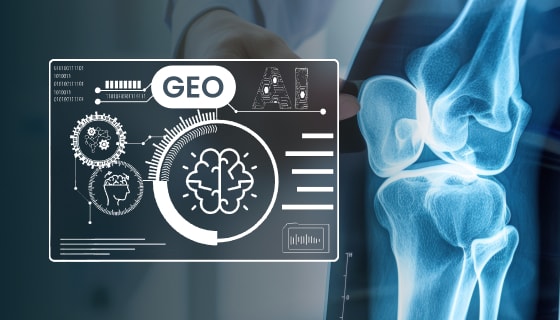Introduction
Welcome to the ever-changing world of Pay-Per-Click (PPC) marketing, where strategies and platforms evolve almost as quickly as the technology that powers them. This rapid evolution, a key aspect of current PPC trends, can be traced back several years, notably to 2014, which marked a significant turning point in online advertising. By understanding where PPC started, particularly in terms of competitive PPC history, we can better predict where it’s headed.
Brief Overview Of PPC In 2014
2014 was a watershed year for digital marketing, particularly for PPC trends. Google AdWords (now known as Google Ads) had already established itself as a leading platform, but this year, some pivotal changes occurred.
Mobile Explosion: The surge in mobile users redefined how advertisers approached PPC. As mobile searches outnumbered desktop searches, advertisers realized the importance of tailoring their Ads for mobile users, a crucial aspect of Pay-Per-Click analysis. Mobile Ad extensions, clickable call buttons, and location-based targeting became more prevalent.
Enhanced Campaigns: Google rolled out Enhanced Campaigns in 2013. This update allows advertisers to target users more effectively based on their device, location, and time of day – all from a single campaign.
Focus on User Experience: It wasn’t just about getting the click anymore. Google’s Quality Score plays a more pivotal role in gauging the relevance and quality of Ads and their landing pages. Advertisers had to ensure that their Ads were clickable and led to relevant and user-friendly landing pages, a key lesson in any PPC guide.
Rise of Remarketing: Remarketing became a buzzword in 2014. Google introduced its remarketing lists for search Ads (RLSA), allowing advertisers to tailor their Ads based on users’ past interactions with their websites, an example of search evolution in PPC.
Setting The Stage For Evolution
The developments of 2014 set the ball rolling for more advanced PPC strategies and tools. The focus shifted from merely gaining visibility and clicks to understanding user intent, improving user experience, and driving conversions, a shift central to PPC trends.
Data-driven Approach: The influx of tools and features meant advertisers had more data. With this data, they could analyze the performance of their campaigns in real-time and adjust their strategies accordingly, an essential component of the Pay-Per-Click analysis.
Integration with Other Platforms: With platforms like Google Analytics, advertisers in 2014 could combine their PPC data with other metrics like website visits, bounce rates, and conversions. This integration was just the beginning of a more holistic approach to digital marketing.
Shift towards Automation: In its early days, automation began to creep into the PPC space. Platforms introduced features that allowed advertisers to automate certain tasks, such as adjusting bids or pausing underperforming Ads. This automation hinted at the future potential of machine learning and AI in PPC trends.
In retrospect, 2014 can be seen as a foundation-laying year for PPC. The emphasis on mobile, the introduction of enhanced campaigns, and the focus on data and automation set the tone for the following years. As we continue our journey, we’ll explore how these early developments paved the way for the sophisticated PPC strategies of today and what the future might hold in 2024.
PPC Trends - Major Shifts In PPC Landscape Since 2014
The realm of Pay-Per-Click (PPC) advertising, a critical element in competitive PPC history, has witnessed a significant transformation over the past decade. Understanding these PPC trends is essential for any effective Pay-Per-Click analysis. From emerging technologies and platforms to changing user behaviors and expectations, the strategies and tools that once dominated the PPC landscape in 2014 have now evolved, making room for newer, more efficient tactics. In this PPC guide, let’s dive into the significant shifts that have shaped the search evolution in the PPC landscape since 2014.

Mobile-First Strategy And Its Impact
2014 marked the beginning of the mobile revolution in digital advertising, a pivotal moment in PPC trends. With increasing numbers of users accessing the web via smartphones and tablets, advertisers had no choice but to adapt.
Impact:
- User Experience (UX): Websites began to adopt responsive designs to ensure a seamless user experience across devices. In PPC, this meant that Ad copy, visuals, and calls-to-action needed to be optimized for smaller screens, a critical aspect of Pay-Per-Click analysis.
- Local Search: With mobile devices allowing on-the-go searches, local search campaigns, a key part of PPC trends, gained prominence. Businesses started leveraging Ad extensions like location extensions to drive foot traffic, an evolution in the competitive PPC history.
- Cost-Per-Click (CPC): As the competition for mobile screen space intensified, the average CPC for mobile Ads rose steadily. Marketers had to be more strategic in their bid Adjustments for mobile search, a trend well-documented in PPC guides.
Rise Of Automation And Machine Learning
While automation tools existed in 2014, the subsequent years saw a more aggressive push towards automated solutions powered largely by machine learning capabilities, marking a significant trend in the history of competitive PPC.
Impact:
- Bidding Strategies: Platforms like Google Ads introduced machine learning-driven automated bid strategies such as “Target CPA” and “Maximize Conversions,” allowing advertisers to achieve specific objectives without manually adjusting bids. This automation is a key topic in any comprehensive PPC guide.
- Ad Creation: With tools like Responsive Search Ads, advertisers could enter multiple headlines and descriptions, allowing the platform’s algorithms to mix and match for optimal performance, a notable advancement in PPC trends.
- Audience Targeting: Machine learning enables platforms to analyze vast amounts of data to segment audiences more effectively. This led to the introduction of features like “Similar Audiences” and “In-market Audiences,” which allowed for more precise targeting, a critical aspect of PPC trends and search evolution.
Changing Keyword Tactics: From Exact Match To Intent-Focused
Back in 2014, keyword targeting was relatively straightforward. The exact match meant that Ads would only show for queries that matched the keyword. However, this rigidity gradually gave way to a more flexible, intent-driven approach.
Impact:
- Broad Match Evolution: The broad match type evolved to consider the search query’s intent, not just the specific terms. This allowed Ads to appear for searches with the same intent as the target keyword, even if the exact phrasing was different.
- Semantic Search: Search engines became better at understanding context. This meant keyword strategies needed to consider semantic search, focusing on topics and themes rather than isolated keywords.
- Negative Keywords: With the lines blurring for keyword match types, negative keywords became more crucial. Advertisers had to be more vigilant in excluding irrelevant queries to maintain ad relevance and reduce wasted spending.
In retrospect, the evolution of PPC since 2014 offers a fascinating glimpse into how technological advancements and changing user behaviors can reshape an entire industry. As we look forward to 2024, one thing is certain: the world of PPC will continue to evolve, and advertisers who adapt will thrive.
Changing User Behavior And Its Impact On PPC
As the digital landscape continues to evolve, so do the behaviors and expectations of online users. This section delves deep into understanding the major shifts in user behavior since 2014 and their consequential impact on PPC campaigns.
The Growth Of Voice Search In PPC Trends
The advent of smart speakers and voice-activated devices like Amazon Echo and Google Home has revolutionized search queries. By 2024, it’s estimated that over half of all searches are voice-driven. This transition from typed to spoken queries has ushered in the need for more conversational keyword phrases in PPC campaigns. Advertisers now incorporate question-like queries, such as “Where can I buy…” or “How do I find…,” ensuring their PPC Ads are relevant for voice search.
Ad Fatigue And The Rise Of Ad Blockers In PPC Trends
With the digital space saturated with advertisements, users have grown wary of incessant Ad bombardments. This phenomenon, termed ‘Ad Fatigue,’ has decreased engagement rates. Moreover, the surge in the adoption of Ad blockers is a testament to users’ yearning for a clutter-free browsing experience. For PPC marketers, this emphasizes the need to craft compelling and highly relevant Ads that offer genuine value, reducing the likelihood of being disregarded or blocked.
Shift From Clicks To Conversions: Quality Over Quantity
While clicks were once the golden metric for PPC success, the focus has dramatically shifted towards conversions. It’s no longer about how many users clicked on the Ads but how many clicks translated into meaningful actions – a purchase, sign-up, or download. By 2024, with advanced tracking and analytics in place, businesses will optimize their PPC campaigns with a laser focus on driving quality traffic that results in conversions.
Budget Allocation And Bid Strategies
The realm of budgeting and bid strategies for PPC has undergone significant transformations. From manual adjustments to leveraging AI for bid predictions, the change is profound. This segment explores these shifts in-depth.
Transition To Automated Bidding Strategies In PPC Trends
Automated bidding took centre stage post-2014, with platforms like Google Ads introducing several AI-driven bidding strategies. These strategies, whether Target CPA, Maximize Conversions, or Enhanced CPC, leverage machine learning to optimize bids for every auction. The granular optimization level ensures maximum ROI, considering factors like device, time of day, location, and more.
The Importance Of Multi-Channel Attribution In PPC Trends
In a multi-device, multi-platform world, understanding a user’s journey to conversion has become more intricate. Enter multi-channel attribution. By 2024, businesses will abandon the ‘last-click attribution’ model. Instead, they recognize and value all touchpoints a user interacts with before converting. This holistic view ensures each channel (organic, social, email, or PPC) gets its due credit, leading to more informed budget allocation decisions.
Ad Spend Reallocation Across Platforms
While platforms like Google and Bing dominated the PPC scene in 2014, the landscape in 2024 is more diverse. With platforms like Amazon, LinkedIn, and even TikTok offering PPC solutions, advertisers are re-evaluating and reallocating their Ad spending. Diversifying PPC investments across platforms allows businesses to tap into varied audiences, ensuring a wider reach and better engagement.
The evolution of PPC since 2014 is a testament to the ever-changing nature of digital marketing. By understanding and adapting to these shifts, businesses can position themselves for success in the dynamic PPC landscape of 2024 and beyond.
The Role of Data And Analytics
Over the past decade, the importance of data and analytics in PPC ( Pay-Per-Click) marketing has grown exponentially. Not only has data become more accessible, but the ways advertisers can use it to inform their strategies have also evolved. Here’s a deep dive into the pivotal role of data and analytics in shaping the PPC landscape.
Emphasis On Data Privacy And GDPR
Since the introduction of the General Data Protection Regulation (GDPR) in 2018, there has been a significant shift in how businesses collect, store, and use user data. GDPR was designed to harmonize European data privacy laws, protect and empower EU citizens’ data privacy, and reshape how organizations approach data privacy.
For PPC marketers, this meant refining targeting techniques and ensuring all user data was collected with clear consent. Transparency became a cornerstone, with businesses having to be upfront about how they intended to use collected data. As a result, PPC campaigns became more user-centric, focusing on delivering value to consumers rather than just achieving conversions.
Advanced Analytics And Reporting Features
The years following 2014 saw a slew of advanced analytics tools and platforms catering to PPC professionals’ growing needs. Google Analytics, for instance, introduced more granular audience segmentation, cross-device tracking, and in-depth conversion path data.
With these features, PPC marketers could track a user’s entire journey, from the first interaction with an Ad to the final conversion, helping them understand which touch points were most influential in the conversion process. Such insights allowed for more informed budget allocation and optimization of Ad spending for better ROI.
Predictive Analytics And Forecasting In PPC Trends
As machine learning and AI became more integrated with PPC platforms, predictive analytics began to play a central role. Tools could now forecast future PPC trends based on historical data, allowing marketers to anticipate changes in user behavior, seasonal trends, or competitive landscapes.
Predictive analytics also paved the way for smarter bidding strategies. Instead of manually adjusting bids based on past performance, algorithms could now adjust bids in real time to capitalize on potential conversion opportunities.
What To Expect In 2024: Predictions And Forward Look
As we gaze into the future, the PPC landscape is set to undergo further transformative changes. Here are some predictions for what to expect in 2024:
The Integration Of Augmented Reality (AR) In Ads
With advancements in AR technology, the line between the digital and physical worlds continues to blur. For PPC, this means a new dimension of Ad experiences. Imagine browsing for furniture online and being able to project a 3D model of a couch in your living room through an AR Ad. Such immersive Ad experiences can significantly boost engagement rates and improve conversion potential.
Rise Of AI-driven Personalized Ad Experiences
Artificial Intelligence is set to take personalization to new heights. By analyzing vast amounts of data in real time, AI can create hyper-personalized Ad experiences tailored to individual users. Instead of broad audience segments, Ads in 2024 may cater to unique user personas, increasing relevance and conversion rates.
Shift Towards Contextual And Privacy-Focused Advertising
As concerns around data privacy grow, there’s likely to be a shift towards more contextual advertising, which doesn’t rely heavily on user data. Instead, Ads would be shown based on the content of a webpage, ensuring relevance without compromising user privacy. This shift aligns with the increasing emphasis on delivering value to users, ensuring that Ads are not intrusive but complementary to the user experience.
Conclusion
As we peer back over the last ten years, it’s evident that the realm of Pay-Per-Click (PPC) marketing has undergone a transformative search evolution. The once simple world of bidding on keywords and curating text-based Ads in 2014 has blossomed into a dynamic ecosystem with multifaceted strategies, platforms, and technologies.
In 2014, the emphasis was mainly on exact keyword matching and rudimentary Ad formats. Mobile search emerged as a formidable player, but desktop still reigned supreme. Fast forward to the years that followed, the PPC landscape witnessed a seismic shift, making mobile optimization no longer a luxury but an absolute necessity. We saw the birth of voice search, the rise of video Ads, and the growing importance of user intent over exact keyword matches.
The introduction of automation and AI, particularly in Google AdWords (now Google Ads), marked a pivotal turning point. Advertisers were no longer solely at the helm, manually steering their campaigns; machines began providing data-driven insights, automated bidding strategies, and smarter targeting options. This streamlined the Pay-Per-Click analysis process, ensured more efficient budget allocation, and heightened Ad relevance.
Yet, with all these advancements, the underlying essence of PPC remained unchanged – to connect businesses with their target audience in the most effective and relevant manner with this PPC guide.
The journey from 2014 to 2024 in the world of PPC has been phenomenal. While challenges await, they bring opportunities for innovation, growth, and deeper connections with audiences. As advertisers, our mission remains clear – to stay adaptable, to listen to our audience, and to continually strive for excellence in this ever-evolving digital landscape.












